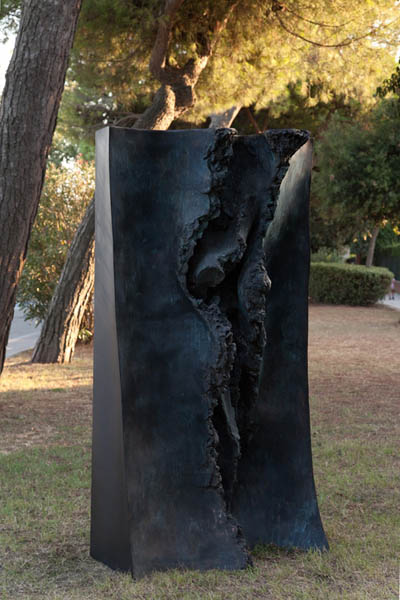Italy
Cristian Biasci
Cristian Biasci’s freedom of composition and his investigation of matter collecting the shimmering of light and reassembling volumetric values come from afar. Medardo Rosso (Turin, 1858 - Milan, 1928), together with his contemporary Auguste Rodin (Paris, 1840 - Meudon, 1917), are the fathers of a revolutionary sculpture which is also a point of reference for the Pisan artist`s work. Overcoming form thanks to the free arrangement of objects in space and a research into matter which uses light as an added value is the tool used by the two friends, who worked together in Paris, anticipating the avant-gardes. Modern sculpture was born with them. Biasci's art is made of projections and recesses, as Rodin liked to say of his own work. But if the inventor of unfinishedness tried out new forms of representation using the motif of the torso, while Rosso translated what is visible by perceiving it as a world of vibrations, Biasci, who is son of the twentieth century, changes the concept of the torso into the study of the torso of the earth and instead of describing the vibrations of the existing reality, records them. Bergson maintains that the substance of modern sculpture consists of the tension in becoming, where reality finds a temporary form in the union of matter and memory. Biasci’s works are placed in this dimension, magmatic matter opens and twists, swallowing up time, and while occupying space it discloses the ridges of history. To feel the huge force hidden in the wounds of one of his sculptures you have to walk around it. And this has nothing to do with the dimensions. Whether it be a little work carved out of white Carrara marble or a bronze mastodon, to grasp the sliding of shadow and the darting of light – a metaphor of the alternation of the years – you have to follow the rhythm the artist has imposed on it. And this introduces another fundamental element in Biasci's work: the field of measure. In his work the adventure of matter concerns the great tensions of man, such as curiosity, fear, the sense of the unknown and the sense of discovery. What are those cracks hiding? And are they produced by nature or are they the fruits of calculation? They are both. Biasci tells us something magnificent and anti-monumental about our being in the world, here and now. But he does not do it by chance. He does not let instinct drive him. Each choice, each spire of one of his creations as well as each screen opened towards the inside is built with an exact rhythm. The development of the work of art, its disclosure, is the result of an extremely detailed project, in which an empty space corresponds to a full space, an absence to a presence.
Because art is first of all the representation, albeit partial, of the harmony that reigns in the universe.
Text by Anna Caterina Bellati
